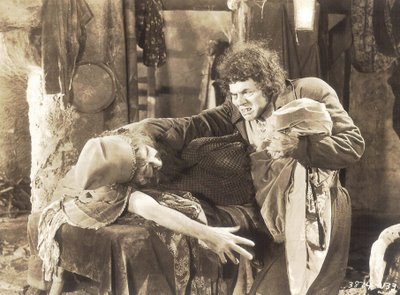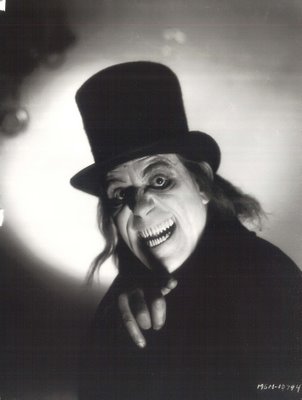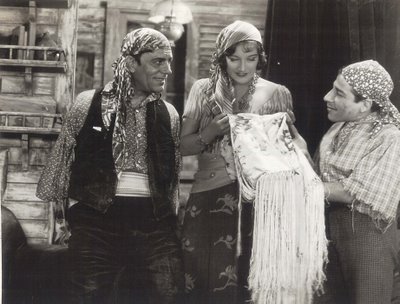
 Lon Chaney Died 76 Years Ago Today
Lon Chaney Died 76 Years Ago TodayThe monster magazines used to trumpet, Lon Chaney Shall Not Die!, and they were right, to the extent that still reproduction kept the man’s image alive, but for those of us confined to unimaginative television markets, the possibility of this silent actor turning up on our home screens was remote at best, other than an occasional glimpse on Fractured Flickers. It was TCM and laser discs that brought Chaney out of his archival refuge, and even though a number of the films were letdowns (particularly the MGM vehicles), there was no argument as to Chaney’s truly unique position in film history. He died August 26, 1930. Kevin Brownlow’s excellent documentary provides first-hand recollections from then-impressionable boys whose mourning over the loss persists to this day (and most of them would have to be in their eighties, or more, by now). Did they identify with Chaney as society’s truest pariah? Other stars dabbled in the role of outcast (recent subject James Dean among them), but you knew these guys could have any girl they wanted if their innate movie star appeal were switched on. Chaney’s the real Miracle Man who never played celebrity. He was the working man’s actor (note the cap in this portrait --- looks like he’s headed for work at a construction site) who declared there was no Lon Chaney after those stage lights went down.



 Just to make the separation with Hollywood complete, he used to take vacations deep in the woods. Surviving home movies have an austere and rustic quality you’d never get from present day stars on holiday. When Lon, Jr. was apparently still-born, his father scooped up the infant and rushed him outside to a near-freezing mountain stream, where he induced breathing by immersing little Creighton in the water. Chaney was one actor who understood something (maybe too much) about real life. His kind of hardship was very nineteenth century, and it’s still a shock to look upon that weathered face and realize this man died when he was only forty-seven.
Just to make the separation with Hollywood complete, he used to take vacations deep in the woods. Surviving home movies have an austere and rustic quality you’d never get from present day stars on holiday. When Lon, Jr. was apparently still-born, his father scooped up the infant and rushed him outside to a near-freezing mountain stream, where he induced breathing by immersing little Creighton in the water. Chaney was one actor who understood something (maybe too much) about real life. His kind of hardship was very nineteenth century, and it’s still a shock to look upon that weathered face and realize this man died when he was only forty-seven.

So what was his secret? In an era of celebrity that played at being aloof, he was genuine. Authentic Chaney autographs are about as plentiful as feathers on a frog. Fake ones are offered daily by dauntless e-bay hucksters --- I’ve seen a few signed with felt tips. Well, if collectors are gullible enough to buy these, why not just add Have a Nice Day with a smiley face and be done with it? Folks in the twenties reserved a special place in their complicated psyches for Lon. Writer David Skaal (all his books are great) says he evoked memories of the Great War and the horrific injuries inflicted during that. Others maintain he brought the forbidden pleasures of a travelling freak show into neighborhood theatres. It’s probably some of both, plus a lot of unwholesome explanations nobody’s yet thought of. A casual look at The Penalty will give you all the sick you need --- this 1920 corker can still shock viewers today with its unbridled depravity.




The Chaney mystery is abetted in no small way by the unavailability of his films. So many good ones are lost. Books have been written about movies we’ll probably never see. I know some guys whose first request in the afterlife will be a screening of London After Midnight, followed by, perhaps, A Blind Bargain. Any unseen footage of Chaney is like a rope of pearls. When they found an odd reel of the otherwise lost Thunder, it was an experience akin to entering Tutankhamun’s tomb. Somehow it’s appropriate that much of Chaney go missing. We can look at the surviving stills and dream of the miracles he wrought. Based on the expectations we’ve developed over the intervening decades, the features would almost certainly be disappointing, so maybe some of his mystique is best left to our imaginations.